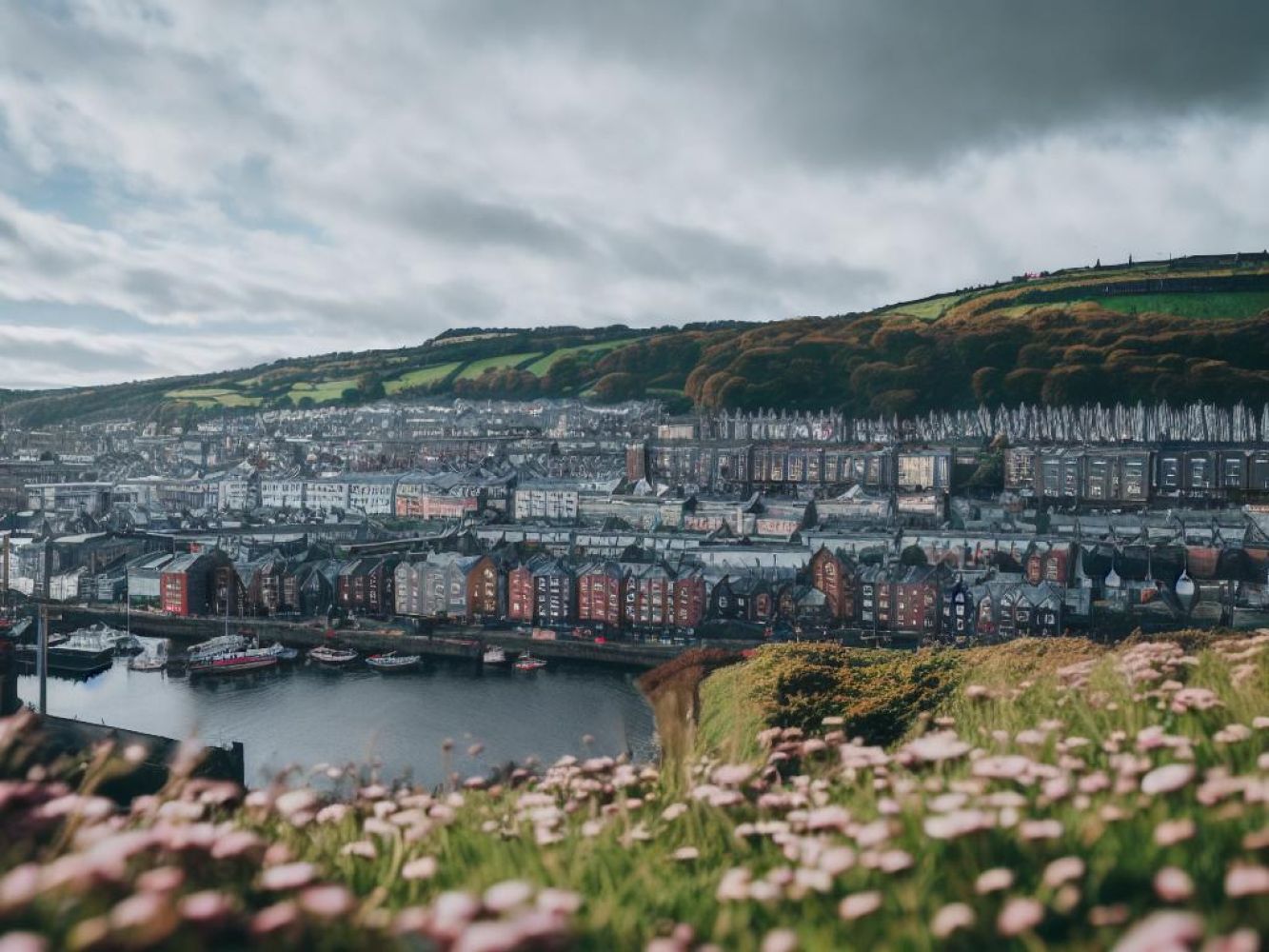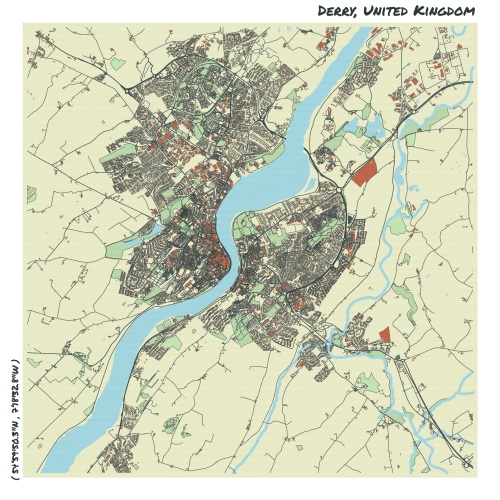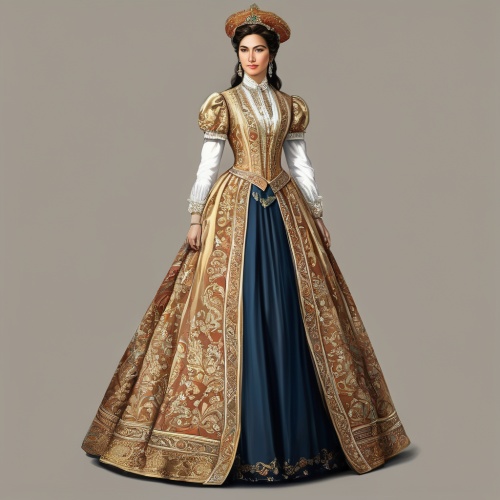Understand
Derry, also known as Londonderry, is a city with a rich history and political significance. The name of the city is a matter of contention, with differing opinions among unionists and nationalists. The compromise of referring to the county as "Londonderry" and the city as "Derry" is not universally accepted. The city council officially goes by "Derry," while the Northern Ireland Executive and the UK government recognize it as "Londonderry." Conflicting road signs further contribute to this unique situation. Located on the banks of the River Foyle, Derry is the second largest city in Northern Ireland and one of the oldest inhabited places on the entire island of Ireland. Its history dates back over 1,450 years, and it proudly boasts an Iron Age fort called the Grianan of Aileach, just across the border in County Donegal. In the 6th Century, St Columba/Colmcille established a monastery in Derry. Centuries later, King James I of England had the city built up by the wealthy guilds of London, surrounded by the defensive walls that still encircle it today. These very walls witnessed a momentous event in Derry's history - the Great Siege of 1688. The city was under siege by the Catholic forces of James II, but its Protestant settlers stood their ground within the walls. The brave act of a group of apprentice boys from London, who locked the city gates, marked the start of this historic siege. The siege lasted a grueling 105 days, during which approximately one-third of the city's population perished from disease and starvation. When James II himself attempted to negotiate surrender terms at the city walls, the defiant cries of "No Surrender" rang out. The siege finally ended when the relief ship Mountjoy broke through the boom on the River Foyle. The legacy of the Great Siege of Derry left lasting divisions between the Catholic and Protestant communities. The city's proximity to the Irish border and its demographic makeup intensified conflict and violence, rivaling even Belfast during the Troubles. Notably, Bloody Sunday, where 14 civil rights protesters were killed by British soldiers, occurred in Derry's Bogside area. Since the peace process in Northern Ireland, Derry has been steadily transforming into a vibrant and culturally diverse city, with a growing tourist appeal. In 2013, it was recognized as the City of Culture. One of Derry's main attractions is its well-preserved 16th-century walls, which are among the oldest in Europe. The city's population is predominantly young, with a thriving scene catering to the 20-30 age group. From clothing stores and boutiques to pubs, bars, and clubs, Derry offers a variety of entertainment options. Its traditional Irish and folk music scene is particularly noteworthy.
Map & Climate
Popular Foods
 The first most popular food in the United Kingdom is Fish and Chips. This classic dish consists of battered and fried fish, typically cod or haddock, served with hot, crispy French fries. The fish is coated in a light, crunchy batter that contrasts with the tender, flaky fish inside. It's often accompanied by a side of mushy peas or tartar sauce for added flavor.
The first most popular food in the United Kingdom is Fish and Chips. This classic dish consists of battered and fried fish, typically cod or haddock, served with hot, crispy French fries. The fish is coated in a light, crunchy batter that contrasts with the tender, flaky fish inside. It's often accompanied by a side of mushy peas or tartar sauce for added flavor. The second most popular food in the United Kingdom is Full English Breakfast. This hearty meal is typically enjoyed on weekends and includes bacon, sausages, eggs (often scrambled or fried), black pudding, grilled tomatoes, mushrooms, baked beans, and toast or fried bread. Sometimes, it can also include kippers (smoked herring) or haggis (a Scottish specialty made of sheep's heart, liver, and lungs).
The second most popular food in the United Kingdom is Full English Breakfast. This hearty meal is typically enjoyed on weekends and includes bacon, sausages, eggs (often scrambled or fried), black pudding, grilled tomatoes, mushrooms, baked beans, and toast or fried bread. Sometimes, it can also include kippers (smoked herring) or haggis (a Scottish specialty made of sheep's heart, liver, and lungs). The third most popular food in the United Kingdom is Shepherd's Pie. This traditional comfort food is made with minced lamb (or beef) mixed with onions, carrots, and sometimes celery, forming a savory meat mixture. This mixture is then topped with a layer of mashed potatoes and baked until the potato is golden brown. Some recipes may also include a layer of cheese or breadcrumbs on top for added flavor and texture.
The third most popular food in the United Kingdom is Shepherd's Pie. This traditional comfort food is made with minced lamb (or beef) mixed with onions, carrots, and sometimes celery, forming a savory meat mixture. This mixture is then topped with a layer of mashed potatoes and baked until the potato is golden brown. Some recipes may also include a layer of cheese or breadcrumbs on top for added flavor and texture.




Comments
NO COMMENTS